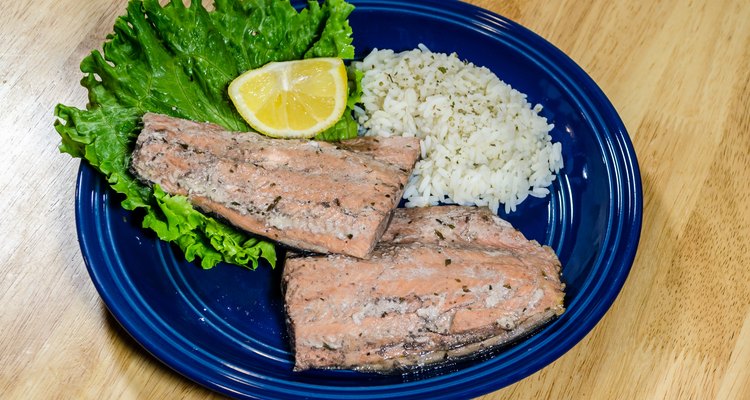
Entrees don't get much healthier than poached salmon. This fish provides essential vitamins and minerals, lots of protein, and beneficial unsaturated fats with minimal saturated fat, cholesterol and calories. Poaching on the stovetop is a health-conscious way to prepare the food, as it doesn't add calories from cooking fat. Poaching is also quick and simple, and results in a meal with natural flavors that aren't overshadowed by cooking fats, caramelization or heavy-handed seasonings.
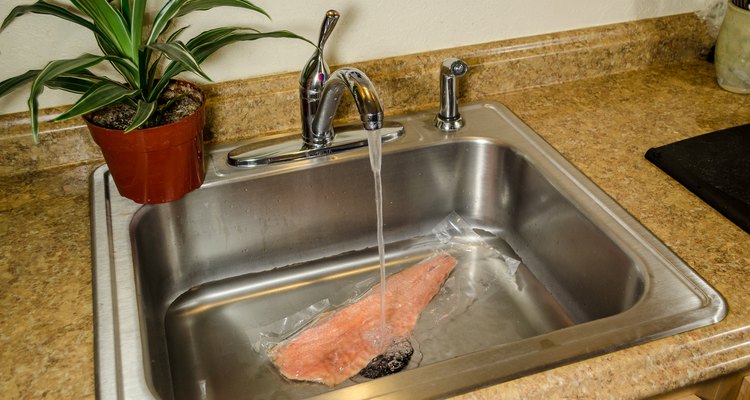
Thaw frozen salmon before poaching it so it cooks quickly and evenly.

Pat the salmon fillets or steaks dry with paper towels, then season the fish with salt and pepper to taste.
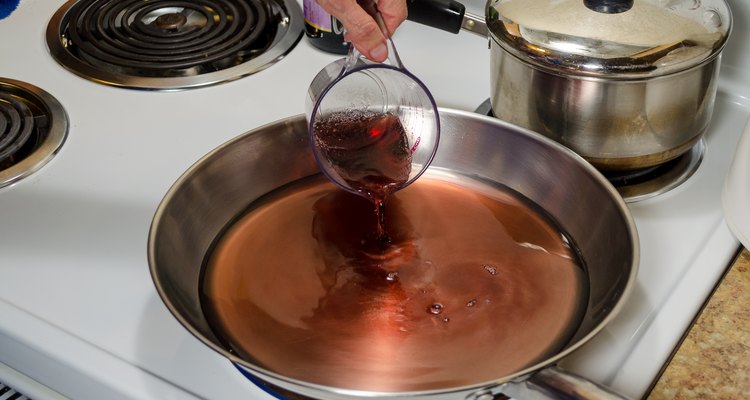
Place a skillet that will snugly fit the salmon pieces over medium-high heat on the stove. Pour in about 1/4 to 1 cup of red or white wine, depending on how strong a wine flavor you want to impart. Add enough water to bring the total liquid to about 2 cups.
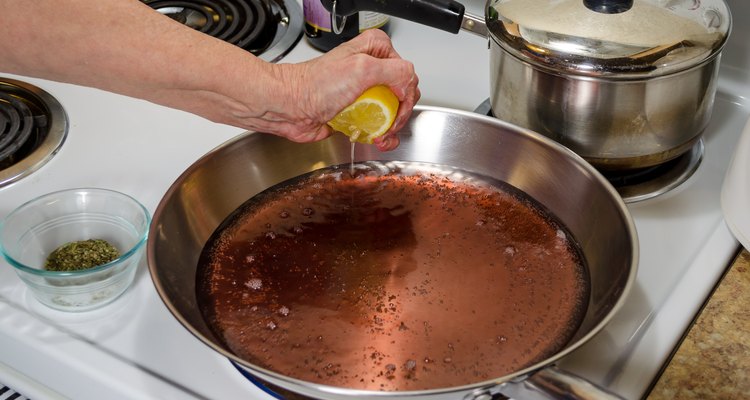
Add a few squeezes of fresh citrus juice or a bit of citrus zest, along with herbs, such as rosemary, dill, thyme, fennel, tarragon, basil or marjoram. If you'd like, add aromatics like chopped celery and carrots; chopped onion, shallot or garlic; and leeks or scallions. Bring the liquid to a boil, then reduce the heat to low so the liquid just barely simmers. Place the cover on the skillet and simmer for about five minutes.
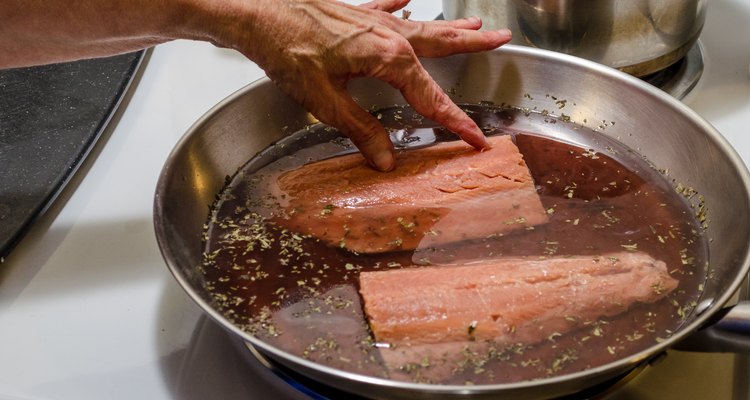
Place the salmon in the pan in a single layer. If you have fillets with skin, place them skin-side down. Recover the pan and poach fillets for about 3 1/2 minutes or steaks for about 4 1/2 minutes.
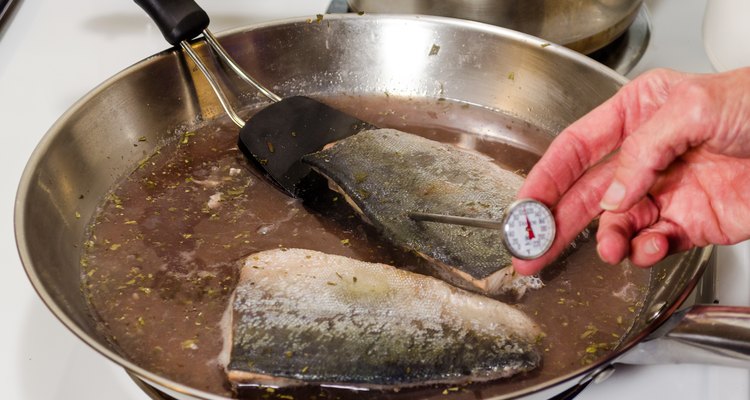
Turn the cuts of salmon carefully with a broad spatula. Poach the salmon for another three minutes or so as needed to bring it to 145 degrees Fahrenheit at the middle of the thickest part on an instant-read thermometer. When it's done, its flesh flakes easily and is entirely opaque.
Related Articles

How to Cook Pan Fried Deer Tenderloin
How to Cook Atlantic Salmon Fillets

How to Bake Boneless Skinless Tilapia

How to Cook Salmon in Pineapple Juice
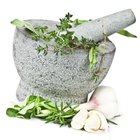
How to Make Rosemary & Thyme Sauce
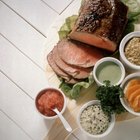
How to Cook a Flat-Cut Rump Roast
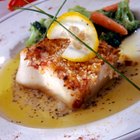
How to Pan Fry Sea Bass

How Long to Cook Steak at 150 Degrees ...
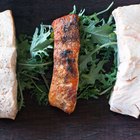
How to Cook Sea Trout

How to Measure Armpit to Armpit
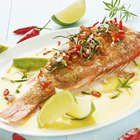
How to Bake Yelloweye Rockfish

How to Cook Alligator Steak

How to Cook Boneless Country Spare Ribs

How to Cook a Rib Eye to Medium-Well in ...

How to Make Whipping Cream With Milk

How to Cook Trevally

How to Broil Chicken on the Bone

How to Reduce Wine With Sugar to a Glaze

How to Cook Tender Calamari

How to Freeze Empanadas
References
Tips
- Don't let the poaching liquid come to a boil at any point during the poaching.
- Turn the poaching liquid into a sauce after removing the salmon by increasing the heat to high and returning it to a boil. Lower the heat to medium to simmer and reduce to the desired consistency. Stir in a few tablespoons of butter and complementary aromatics, herbs and spices.
Writer Bio
Eric Mohrman is a food and drink, travel, and lifestyle writer living in Orlando, Florida. He has professional experience to complement his love of cooking and eating, having worked for 10 years both front- and back-of-house in casual and fine dining restaurants. He has written print and web pieces on food and drink topics for Visit Florida, Orlando Style Magazine, CrushBrew Magazine, Agent Magazine, Dollar Stretcher Magazine, The 863 Magazine and other publications.
Photo Credits
Lawrence Roberts/Demand Media